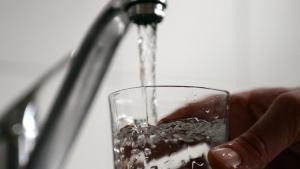-
About Homer
-
- Americans with Disabilities Act Compliance Program City Campgrounds Community Recreation Hickerson Memorial Cemetery
- Library Parks & Trails Public Safety Fire Police Emergency Information
- Events & Activities City Calendar Library Calendar Recreation Calendar Doing Business in Homer Sister City Program Coast Guard City
-
- Departments
- Government
- How Do I?
A-Frame Water Transmission Main Replacement
Project Description
This project replaces an 800 LF section of aged 8-inch cast iron water supply line with 10-inch, earthquake-resistant HDPE pipe and installs a subsurface anchoring restraint system to safeguard the community's clean drinking water supply and protect public health and safety. The water transmission line serves the west side of Homer, and at 58 years old, has become brittle and corroded, making it susceptible to failure from seismic activity. Additionally, its location on a 52-degree slope poses an extreme risk of catastrophic failure from slope instability.
This upgrade is critical as it mitigates a significant vulnerability in the City's water utility system, ensuring reliable water service for residents and essential facilities that depend on this supply line.
Scope
-
Design and engineer this section of water line to be resistant to catastrophic damage from slope failure or earthquakes, including a subsurface anchoring restraint system to increase stability in a slope subsidence event.
-
Replace 800 LF of 8-inch cast iron drinking water supply line with 10-inch HDPE pipe.
Phase

![]()
Cost Estimate
Design $ 190,289
Construction $1,141,593
Total $1,331,882
Funding

Need and Benefits
Public Health and Safety: The A-Frame Water Transmission Line is critical infrastructure that ensures the life, health, and safety of Homer's residents, as well as residents in surrounding unincorporated areas who rely on commercial delivery of the City of Homer drinking water supply. The transmission line also singularly serves the City's medical district, regional hospital and senior Center and senior housing complexes—making current vulnerabilities in this aging line a serious life safety concern for some of our most vulnerable populations.
Over time, the cast iron pipe has been weakened by aggressive corrosion in our wet, acidic soils and has become increasingly brittle. This makes it prone to cracking or rupture during seismic activity, which can introduce harmful bacteria and pathogens into the drinking water system. A rupture would disrupt water supply and significantly compromise water pressure for the west side of town, hindering firefighting operations during the time required for repairs. Catastrophic failure during a major earthquake or slope failure would be far more severe. Repairing brittle cast iron pipe during a major disaster presents serious challenges due to limited availability of specialized machinery and spare parts, while the community would simultaneously need to secure emergency drinking water supplies during an extended outage.
Replacing the obsolete cast iron with earthquake-resilient HDPE pipe significantly mitigates potential life, health, and public safety losses.
Economic and Service Reliability Benefits: Replacing the water main delivers substantial long-term economic benefits and ensures reliable service for our community. Modern pipes significantly reduce water loss from leaks, which currently wastes treated water and increases operational costs passed on to ratepayers. New infrastructure requires far less maintenance and emergency repair work, eliminating the frequent service disruptions and costly emergency responses associated with aging pipes. The replacement also avoids the exponentially higher costs of emergency repairs and any collateral damage that occurs when old mains fail unexpectedly.



